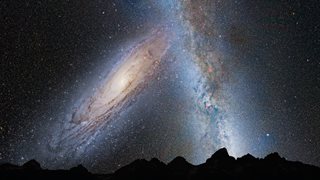Playing is Learning
Our Neighboring Galaxies
January 6th, 2015
| Ads | ||
|
Play the Challenge
|
||
|
A New Word is Coined A new Character is revealed A new Game is Afoot |
An Edutainment Adventure Based on Three Rounds of Investigations
|
|
|
Welcome to the World of PROFESsee™by seeCOSM™ PROFESsee™ is my title. I am the perpetual learner, in pursuit of knowledge, wisdom and truth. I derived my name from professor |
 |
|
|
Truth be told, there is more out there than Galileo Galilei discovered, more than anyone rightly will ever know. However, we have to start somewhere and closer home is always best. Thus, the best place to start our study would be with the galaxies that are nearest to our milky way. Closest? Yes, you heard right, if 30,000 light years are anything close! A galaxy is a monolithic system bound by gravity and constituting of vast expanses of stars systems, dust and nebulae. The longest known has been our Milky Way Galaxy whose name is as a result of the milky appearance of the billions of stars within our system. Further research has however shown that we are not the only existing galaxy. On the contrary, we are surrounded by several others, some of which are so close that they have been engulfed by our milky way. One such galaxy is the Canis Major Dwarf, which is the closest in terms of distance. It was discovered quite recently, in 2003 which is probably as a result of its small size. See, the Canis Major Dwarf only has around 1 billion stars, which is rather tiny in contrast to the Milky Way’s 200-400 billion stars. The Sagittarius Dwarf Sphr was discovered in 1994 and at only 75,000 light years away. It previously held the record for being closest to our galaxy. The Ursa Major II Dwarf closes in at the third place and it is known for its brightness. This galaxy is home to the brightest star system in all the galaxies. The Large and Small Magellanic Cloud are irregular dwarf galaxies and stand at 180,000-210,000 light years away severally. The Andromeda Galaxy (M31) prides in being the nearest spiral galaxy to us, but not in terms of distance. This galaxy is bound to the Milky Way gravitationally hence the proximity but in actuality, it lies an estimated 2 million light years away. Can you the nearest spiral galaxy? Image courtesy of: http://en.wikipedia.org/wiki/Andromeda%E2%80%93Milky_Way_collision |
||
Latest News / Events
E-mail [email protected]
The Professee™ Newsletter Beta
http://www.seecosm.com/
http://www.seecosm.com/

